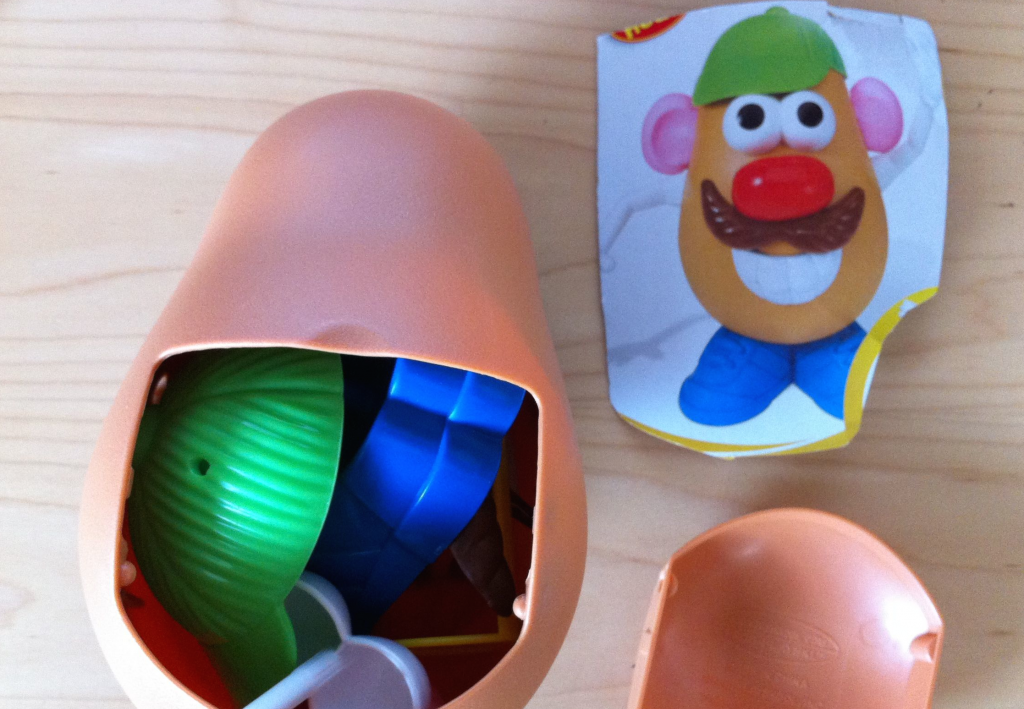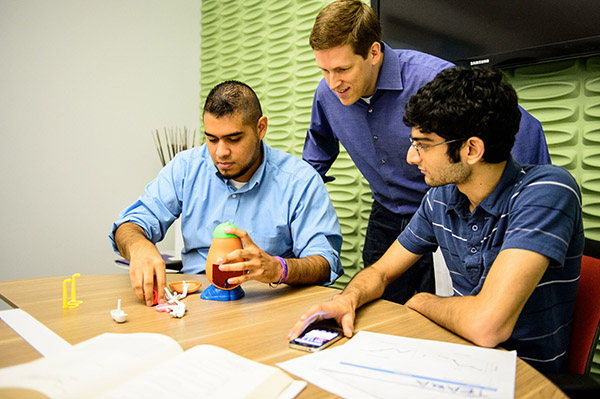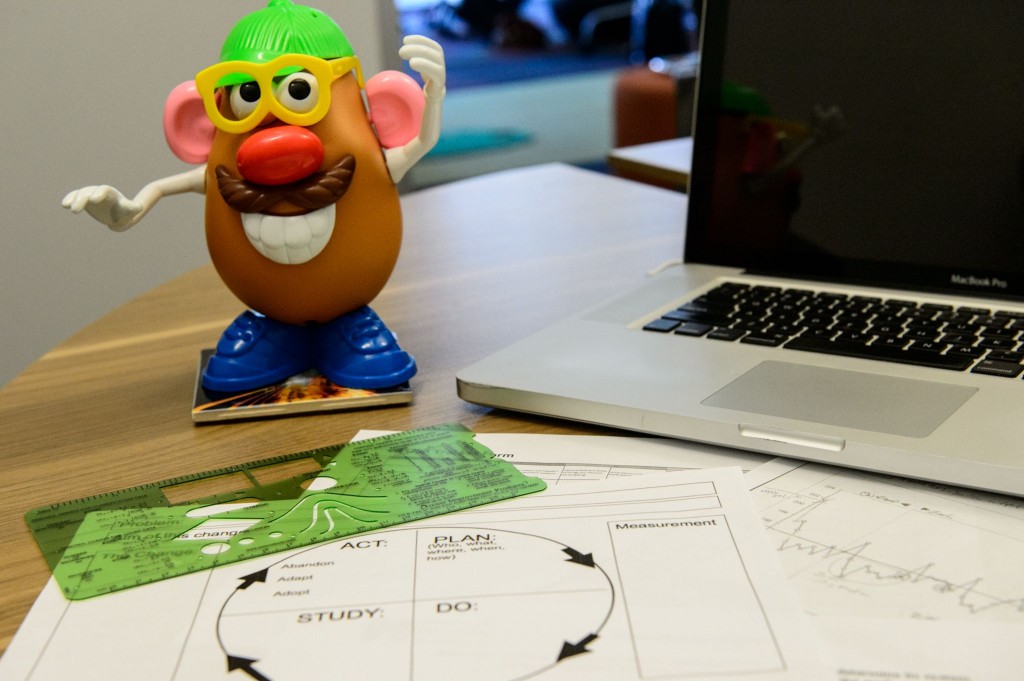PDSA Exercise
This exercise using Hasbro’s Mr. Potato Head toy is a fun and effective experiential method of teaching.
This exercise teaches individuals and teams how to use small-scale, plan, do, study, act (PDSA) learning cycles to test change ideas and data over time to improve processes.

Introduction
The aim of the exercise is relatively simple: assemble the Mr. Potato Head toy as quickly as possible with all of the right pieces in place and in the right position.
In the process, teams learn to test ideas, use run charts, and collaborate for improvement. Important lessons quickly emerge about making predictions, building knowledge through testing, developing standard work, and the influence of competition.
This 60- to 90-minute exercise is great for teaching people at all organizational levels how to use PDSA testing and has been facilitated with students and professionals in education, healthcare, public safety, and business. The exercise has been conducted in countries around the word.
Step One: Preparation
In advance of the exercise, you will need to prepare the Mr. Potato Heads and print the required forms.
- Hasbro Mr. Potato Head toy per each four to eight people. The original Mr. Potato Head version is preferred, but other themed versions work too. The key is to have the same version for all teams. It’s better to use versions with multiple parts and not to remove any extra parts. Load the parts into the body storage compartment. In some versions the hat and feet will not fit in the body.
- Timer. Any timing device that tracks in minutes and seconds works. Participant smart phones are often the best option.
- PDSA Tracking Form. Use a PDSA tracking form to encourage participants to complete the full four-part cycles and experience documenting their tests. It’s important to include prediction as part of the plan.
- Run Chart Form to Measure Time. Track time in seconds and plot data by hand.
- Run Chart Form to Measure Accuracy. Track accuracy score and plot data by hand
- Image of Mr. Potato Head. A clearly visible image of the Mr. Potato Head version in use for the exercise to display the placement of the pieces that reflect an accuracy score of 3.
Handouts may be distributed at the start, but withhold the Mr. Potato Head kits until you are ready to begin.

Step Two: Provide Clear Instructions
The exercise works best when participants receive clear instructions before beginning.
- Roles. Instruct teams to decide on a tester, timekeeper, and accuracy inspector.
- Starting Setup. Each PDSA cycle begins with all of the parts inside the storage compartment of the Mr. Potato Head body and the compartment door closed. If the hat or legs do not fit, they may be placed beside the body.
- Measurement Definitions:
- Time. Clock starts when tester touches Mr. Potato Head. Clock stops when tester stops touching Mr. Potato Head AND says, “time.”
- Accuracy. Inspectors can assess an accuracy score from one to three. A score of one means one or more of the required pieces are not on Mr. Potato Head. A score of two means all of the pieces are on Mr. Potato Head, but one or more pieces is grossly out of place. A score of three means all of the pieces are on Mr. Potato Head and positioned correctly.
- Documentation. Each participant is instructed to track their team’s data on their own handouts. This includes the four phases of each PDSA on the PDSA tracker form and plotting the time and accuracy data on the run charts.
- Pacing. For each cycle, participants will make a “plan” to test a change idea and capture the time and accuracy scores predicted for the test. Tables may “do” their test and complete the “study” and “act” phases including documentation. Teams will wait for the facilitator’s instructions before initiating another test.
- Optional. Have each team write their time and accuracy scores on a slip of paper at the end of each test and submit to the facilitator. Enter the team data into a spreadsheet to track small multiples of all of the teams’ data for discussion at the end.

Step Three: Facilitate the Exercise
Instruct the teams to develop a plan and make a prediction. When they are ready, let them begin their test.
- Walk Around. Observe the teams doing their tests and look for teaching points to share with the larger group that reinforce key concepts of PDSA testing.
- Clarify Instructions. Correct teams that are not following instructions. Answer questions from participants wishing to clarify the constraints.
- Identify Best Practice. Between each cycle, identify the team with an accuracy score of 3 that has the fastest time and share the time with the group.
- Share Learning – Between each cycle, share one teaching point noted while observing team tests.

Step Four: Debrief
Build in time to debrief the exercise and share information.
- Test vs. Talk – Teams frequently spend too much time planning and not enough time testing and learning. Testing leads to learning that facilitates future tests and improvement. Testing reveals considerations that cannot be predicted.
- Time vs. Accuracy – Teams may see accuracy scores dip as they pursue increasing speed. Measuring to quality characteristics enables achieving both aims of improved time and reliable accuracy.
- Competition – While competition between teams is not introduced in the aim, teams frequently become competitive and challenge winning teams and times that are significantly better than others. Note the competition that emerges and inquire if it is helpful for improvement work.
- Collaboration – It’s very common for teams to never think to visit another team to learn ideas and share knowledge. Ask why no one visited another team and highlight the missed opportunity.
- Documentation – Ask how much time it took to complete the PDSA tracking form and run charts for each test. Note that documenting improvement does not need to be a burden. Some participants will fail to document their PDSAs and run chart data or abandon it; inquire why and discuss the missed learning.
- Testing Considerations – Teams will often ask about several testing considerations including switching testers, changing test ideas versus iterative testing on a single idea, individual versus team approaches, and standard work. Each consideration offers a chance to discuss various considerations you might encounter when doing PDSA testing.
- Collaborative or Networked Learning – If participants are participating in an IHI Breakthrough Series Collaborative or networked learning process, it can be helpful to show the group’s aggregate mean scores along with a small multiples for each table. Note the variation represented in the group and connect how this is similar to the variation noted in teams or sites participating in collaborative or networked improvement initiatives.

How to Cite This Exercise
The exercise is free for use for non-commercial purposes. Please include the following attribution in all presentations and handouts.
Copyright © 2019 DMW Austin, LLC
Williams, D.M. Mr. Potato Head PDSA Exercise Facilitator Guide. Austin, TX: 2019 DMW Austin, LLC. (Available on www.davidmwilliamsphd.com)


Coin Spin
PDSA Exercise
Dave developed the coin spin PDSA exercise as an alternative. It requires only four coins and a PDSA form and is economical and portable.
Learn More
Want to stay in-the-know about the Science of Improvement?
Sign up for Dave’s email newsletter to stay informed.